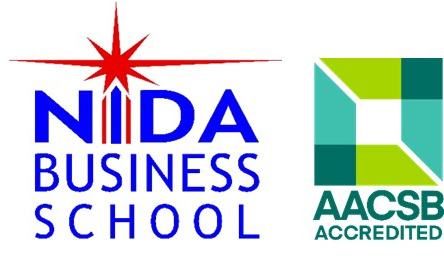The Trust in The Security of The Electronic Payment System
Keywords:
Electronic Payment System, Perceived Security, TrustAbstract
It is said that good security increases trust. And good trust will increase the use of electronic payment systems. However, aside from the security factor, there are other variables that contribute to trust in the usage of electronic payment systems.
The purposes of this study were to determine factors affecting trust in the use of e-payment systems and to compare the level of trust in the use of e-payment systems through age and income levels. The research’s conceptual framework was based on the concept of safety awareness, the perception of risk, and other variables that influence trust in e-payment. The data were collected from 769 e-payment users via online questionnaires using the stratified sampling method classified by age. This study analyzed the results by using bivariate analysis and the structural equation model.
The findings revealed that factors affecting trust in the use of e-payment were perceived security, perceived risk, word-of-mouth, brand reputation of the e-payment, and the experience with e-Payment. The sample group, aged 25-39 years old, with an average monthly income of 15,000-30,000 baht has the highest average level of trust in using the e-payment system.
References
Bank of Thailand. (2021). IT Best Practices Phase 2 in December 2014. Retrieved July 30, 2021 [PDF file], from chrome-extension://efaidnbmnnnibpcajpcglclefindmkaj/viewer.html?pdfurl=https%3A%2F%2Fwww.bot.or.th%2FThai%2FFinancialInstitutions%2FPruReg_HB%2FRiskMgt_Manual%2Fdownload%2F%25E0%25B9%2581%25E0%25B8%2599%25E0%25B8%25A7%25E0%25B8%259B%25E0%25B8%258F%25E0%25B8%25B4%25E0%25B8%259A%25E0%25B8%25B1%25E0%25B8%2595% 25E0%25B8%25B4%2520IT%2520Best%2520Practices%2520-%2520Phase%2520II.pdf&clen=10650551
Bank of Thailand. (2021). Payment Transactions in July 2021. Retrieved August 31, 2021, from https:// www.bot.or.th/Thai/Statistics/PaymentSystems/Pages/StatPaymentTransactions.aspx
Chellappa, R. K., & Pavlou, P. A. (2002). Perceived information security, financial liability and consumer trust in electronic commerce transactions. Logistics Information Management, 15(5/6), 358-368.
Eckert, A., Milan, G. S., Roy, G., & Bado, R. (2021). Welcome back: Repurchase intention of Brazilian customers on e-commerce websites. In A. L. Leite, Revista de Ciências da Administração Vol. 23 No. 59 (pp. 23, 106-120). Português: 2021-05-20.
Ewurah, S. (2017). The concept of egovernment: ICT policy guidelines for the policy makers of Ghana. Journal of Information Security, 8, 106-124.
Hong, I. B., & Cha, H. S. (2013). The mediating role of consumer trust in an online merchant in predicting purchase intention. International Journal of Information Management, 33(6), 927-939.
Kim, C., Tao, W., Shin, N., & Kim, K.-S. (2010). An empirical study of customers’ perceptions of security and trust in e-payment systems. Electronic Commerce Research and Applications, 9(1), 84-95.
Mallat, N. (2007). Exploring consumer adoption of mobile payments–A qualitative study. The Journal of Strategic Information Systems, 16(4), 413-432.
Maqableh, M., Hmoud, H.Y., Jaradat, M., & Masa’deh, R. (2021). Integrating an information systems success model with perceived privacy, perceived security, and trust: The moderating role of Facebook addiction. Heliyon, 7, 1-15.
Mehrad, D., & Mohammadi, S. (2017). Word of mouth impact on the adoption of mobile banking in Iran. Telematics and Informatics, 34(7), 1351-1363.
Munyoka, W., & Maharaj, M. S. (2019). Privacy, security, trust, risk and optimism bias in e-government use: The case of two Southern African Development Community countries. SA Journal of Information Management, 21(1), 1-9.
Nguyen, T. D., & Huynh, P. A. (2018). The roles of perceived risk and trust on e-payment adoption. Econometrics for Financial Applications, 760, 926-940.
Nguyen, T. D., & Ke-Duc, Le (2021); PLS-SEM approach in measuring the impact of influencing factors on user’s perceived security and trust in e-payment–The case of rural areas in Vietnam; International Journal of Scientific and Research Publications (IJSRP), 11(4), 357-364.
Oney, E., Oksuzoglu Guven, G., & Hussain Rizvi, W. (2017). The determinants of electronic payment systems usage from consumers’ perspective. Economic Research-Ekonomska Istraživanja, 30(1), 394-415.
Papadopoulou, P., Kanellis, P., & Martakos, D. (2001). Investigating trust in e-commerce: A literature review and a model for its formation in customer relationship. Proceedings of the Seventh Americas Conference on Information Systems (pp. 791-798). Boston: 3-5 August.
Park, J., Amendah, E., Lee, Y., Hyun, H. (2018). M-payment service: Interplay of perceived risk, benefit, and trust in service adoption. Hum. Factors Ergon. Manufact. Serv. Ind., 29(1), 31-43.
Park, J., Amendah, E., Lee, Y., Hyun, H. (2018). M-payment service: Interplay of perceived risk, benefit, and trust in service adoption. Hum. Factors Ergon. Manufact. Serv. Ind., 29(1), 31-43.
Reisenwitz, T. H., & Iyer, R. (2009). Differences in generation x and generation y: Implications for the organization and marketers. Marketing Management Journal, 19, 91-103.
Rouibah, K., Lowry, P. B., & Hwang, Y. (2016). The effects of perceived enjoyment and perceived risks on trust formation and intentions to use online payment systems: New perspectives from an Arab country. Electronic Commerce Research and Applications, 19, 33-43.
Salam, A. F., Rao, H. R., & Pegels, C. C. (2003). Consumer-perceived risk in e-commerce transactions. Communications of the ACM, 46(12), 325-331.
Servon, L. J., & Kaestner, R. (2008). Consumer financial literacy and the impact of online banking on the financial behavior of lower-income bank customers. Journal of Consumer Affairs, 42(2), 271-305.
Shah Alam, S., & Mohd Yasin, N. (2010). What factors influence online brand trust: Evidence from online tickets buyers in Malaysia. Journal of Theoretical and Applied Electronic Commerce Research, 5(3), 78-89.
Tsiakis, T., & Sthephanides, G. (2005). The concept of security and trust in electronic payments. Computers & Security, 24(1), 10-15.
Yang, Q., Pang, C., Liu, L., Yen, D. C., & Michael Tarn, J. (2015). Exploring consumer perceived risk and trust for online payments: An empirical study in China’s younger generation. Computers in Human Behavior, 50, 9-24.
Downloads
Published
How to Cite
Issue
Section
License

This work is licensed under a Creative Commons Attribution-NonCommercial-NoDerivatives 4.0 International License.




